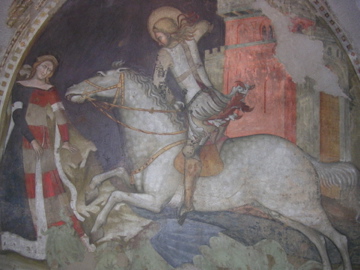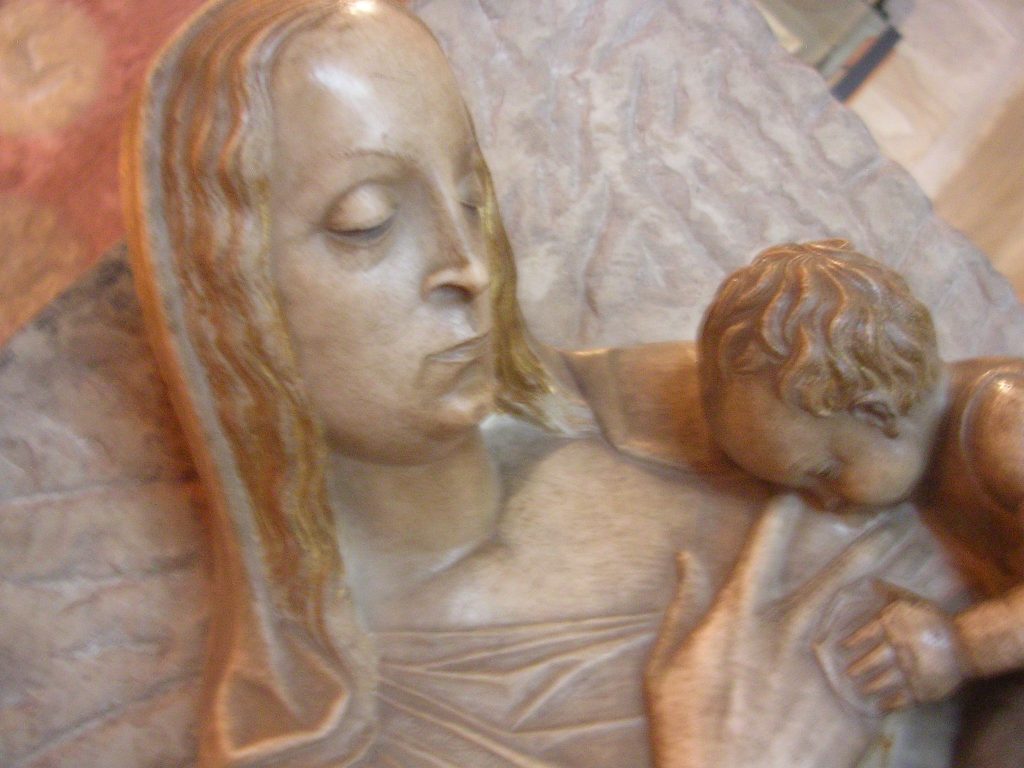The legend of St. George
The legend of St. George, the holy knight who rescued the princess from the terrible dragon that threatened her, gave birth to a famous subject that was widespread within the figurative arts during the Middle Ages and the Renaissance.
The scene of the dragon slayer versus the mythical monster represents the Catholic belief in Christ’s triumph over evil, the victory over the “ancient serpent”.

The subject, however, has not strictly grown with the spread of Christianity, but rather seems to have been assimilated into much older myths and archetypes, such as the myth of the Egyptian god Horus who, on horseback, was represented in the act of slaying tha crocodile (Seth).
The legend of St George is also linked to myths and legends of Greek origin, like the one in which Theseus is seen slaying the Minotaur, or like the legend of Hercules, who defeated the monster Hydra in his second trial.
The classic tale of the princess who is saved by the holy knight takes root rather late in the middle ages, thanks to the spread of the work “Legenda Aurea” written by Jacobus de Voragine (1228-1298). The fanciful story is set in Libya, at a large lake where a terrible dragon has been terrorizing the village. The citizens, to quench the thirst for blood of the monster and to prevent the continued poisoning of the air with its pestilential breath, had begun to offer two sheep a day at first as a sacrifice to the monster’s huge appetite, only then to be forced against their will to draw lots to sacrifice their own children to the monster for a meal. This continued until one day when the daughter of the king was chosen. But just as the princess was about to be sacrificed, a brave knight named George, a native of Cappadocia and a Roman soldier, passed by and asked the girl why she was in tears, under the watchful eye of the people, who looked on from afar. The princess, now resigned to her fate, told him to leave in a hurry or he, too, would die. But in the meantime, the dragon had been emerging from the waters of the lake. George then threw himself boldly upon the monster with his spear, wounding him seriously. The young hero then told the princess to wrap her belt around the neck of the dragon. And then the two of them made their way to the village with the monster in tow, following the princess like an obedient dog. Once he was standing before the crowd George said, “Do not be afraid. Embrace the faith of Christ, and I will kill the monster.” And so he did; however, demanding in exchange for his heroic gesture that everyone, including the King, convert to Christianity and receive the baptism.
This is just one of many variants of the legend of St. George, the princess and the dragon. According to another version, a red rose would rise from the blood of the wounded dragon and St George would offer it to the princess for her collection. This is why in some European countries during the feast of St. George on April 23, men commonly give women a rose. And since UNESCO chose this date to celebrate the international book festival, every woman who receives the gift of the symbolic flower, in turn reciprocates by giving a book to a courteous knight.
di Antonella Bazzoli – April 2012 (updated in April 2014) – translated by Lynn Della Torre



